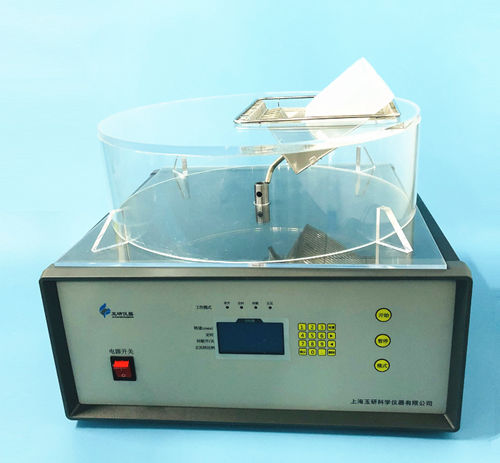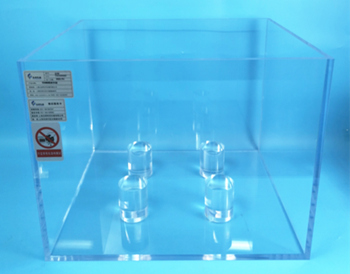企业性质生产商
入驻年限第2年
大鼠、小鼠睡眠剥夺仪是一款不需要对动物进行训练,以温和的方式对动物进行睡眠限制的仪器。 参数设定完成后,不需要人为的干预即可对大鼠或小鼠进行睡眠剥夺的实验。可用于睡眠研究、时差研究和间断性睡眠模型模拟。
产品特点:
· 具有四种工作模式:常开、定时、间歇、正反转;
· 转棒转动温和,不会对动物造成任何机械损伤;
· 定时模式可设置干扰棒转动的时间;
· 间歇模式可分别调节转动时间和停止时间;
· 正反转模式,可以定时设置干扰棒的运转方向;
· 转棒高度可调,减少垫料的影响;
· 根据实验需求,选配大鼠型、小鼠型活动笼;
· 我们也可以提供定制化改进服务;

型号:YAN-239
| |
可根据需要,选择水槽式睡眠剥夺箱:

型号:SY-M3100,小鼠,6个平台
SY-M3040,小鼠,40个平台
SY-R3020,大鼠,15个平台
更多型号,请来电咨询

小鼠的水槽式睡眠和疲劳剥夺正在进行中
| 还可根据需要,选择脑电反馈型睡眠剥夺仪 |
| |||||
|
|

部分参考文献:
1. Cordeira, J., Kolluru, S.S., Rosenblatt, H., Kry, J., Strecker, R.E., McCarlet, R.W. (2017). Learning and memory are impaired in the object recognition
task during metestrus/diestrus and after sleep deprivation. Behavioural Brain Research, 339, 124-129. doi: 10.1016/j.bbr.2017.11.033
2. Hines, D.J., Schmitt, L.I., Hines, R.M., Moss, S.J., & Haydon, P.G. (2013). Antidepressant effects of sleep deprivation require astrocyte-dependent adenosine mediated signaling. Translational Psychiatry, 3, e212. doi: 10.1038/tp.2012.136
3. Lee, D., Lee, S., & Sohn, D. (2016). MP86-19 effect of sleep deprivation on hormonal axis and erectile function. Journal of Urology, 195(4), e1113. doi:10.1016/j.juro.2016.02.2327
4. Lee, D.S., Sohn, D.W., Yoon, B.I., & Yoo, J.M. (2017). 383 effect of sleep deprivation on hormonal axis and erectile function. Journal of Sexual Medicine, 14(1), S113-S114. doi: 10.1016/j.jsxm.2016.11.264
5. Naidoo, N., Davis, J.G., Zhu, J., Yabumoto, M., Singletary, K., Brown, M., … & Baur, J.A. (2014). Aging and sleep deprivation induce the unfolded protein response in the pancreas: implications for metabolism. Aging Cell, 13(1), 131-141. doi: 10.1111/acel.12158
6. Schmidt, M.A. & Wisor, J.P. (2012). Interleukin 1 receptor contributes to methamphetamine- and sleep deprivation-induced hypersomnolence. Neuroscience Letters, 513(2), 209-213. doi: 10.1016/j.neulet.2012.02.040
7. Ward, C.P., Wooden, J.I., & Kieltyka, R. (2017). Effects of sleep deprivation on spatial learning and memory in juvenile and young adult rats. Psychology & Neuroscience, 10(1), 109-116. doi: 10.1037/pne0000075
8. Wooden, J., Pido, J., Mathews, H., Kieltyka, R., Montemayor, B., & Ward, C. (2014). Sleep deprivation impairs recall of social transmission of food preference in rats. Nature and Science of Sleep, 2014(6), 129-135. doi: 10.2147/NSS.S68611
9. Duncan, M. J., L. E. Guerriero, K. Kohler, L. E. Beechem, B. D. Gillis, F. Salisbury, C. Wessel, J. Wang, S. Sunderam, A. D. Bachstetter, B. F. O’Hara and M. P. Murphy, 2022. Chronic Fragmentation of the Daily Sleep-Wake Rhythm Increases Amyloid-beta Levels and Neuroinflammation in the 3xTg-AD Mouse Model of Alzheimer’s Disease. Neuroscience 481: 111-122.
10. Robinson-Junker, A., O’Hara, B., Durkes, A., Gaskill, B., 2019. Sleeping through anything: The effects of unpredictable disruptions on mouse sleep, healing, and affect. PloS one 14, e0210620.
